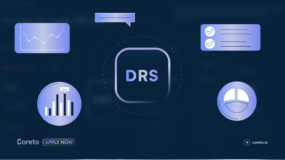
Where I come from, there’s a cautionary expression parents use with children whenever they see horseplay turning too rough: “It’s all fun and games until somebody gets their eye poked out.” Of course, kids generally don’t pay attention to this, and the horseplay doesn’t end until somebody is hurt or something gets broken. Still, it’s wise advice, and can be applied to other aspects of life, especially technology.
Consider the Internet. Some of the earliest adopters were universities and researchers, and during that time, things remained relatively civil. Then around 1994, enterprising companies like AOL, Prodigy, and Compuserve brought email and the “World Wide Web” to the masses with easy-to-use software … and the horseplay began. Before long, people found themselves faced with the growing reality of headaches like annoying email spam, costly virus attacks, and ubiquitous pop-up p*rn ads.
This is an age-old story with technology, and a similar one could be told about so many other advancements we now consider staples of our existence, like electricity, automobiles, the telephone, and smartphones. In each case, there is an initial burst of excitement and hype, then mass adoption (the horseplay period), then unexpected consequences and exploitation(somebody gets their eye poked out).
Fortunately, whenever risk is introduced to an equation, it also creates opportunity. Somebody invents the seat belt to keep drivers safe in accidents, for instance … or those plastic caps you put over your electrical outlets to prevent kids from sticking pieces of metal into them … or anti-virus software to protect against hackers and phishers and malware (oh my!).
Enter Blockchain …
Blockchain technology is no exception to this cycle of Adoption, Adversity, and Adjustment. Blockchain was introduced to the world in 2008 by Satoshi Nakamoto (who may or may not be a real person) in the form of Bitcoin. Among the key features of the Bitcoin system that Satoshi created was “distributed ledger technology (DLT)”, which is a way of decentralizing electronic transactions, making it possible for people to conduct business directly, without the need of a third party … like a bank.
Distributed ledger technology played a pivotal role in making Bitcoin the world’s first viable example of something called cryptocurrency. For those who aren’t familiar with that term, cryptocurrency is a digital or virtual currency built on blockchain technology that uses cryptography for security. Since the inception of Bitcoin in 2008, more than two-thousand other cryptocurrencies have been created. But less than a dozen of these have shown the kind of long-term stability that Bitcoin has.
What’s important to note is that while blockchain might have been born as a means to enable digital currency, it’s not the only possible use for this technology. More than a decade after its birth, blockchain is poised to disrupt not only the currency market, but also fields like healthcare, communication, cybersecurity, real estate, and even government. By the end of 2018, the global market value of blockchain technology, in general, reached $500M and is projected to surpass $2 billion by 2021.
Blockchain Grows Up Quickly
A major reason for these high valuations has been the rapid adoption of blockchain technology over the past decade. In 2015, the number of blockchain wallets (a computer program that allows one to monitor and engage in cryptocurrency) topped out at around 5 million. By 2016, that doubled to over 10Mil, and by 2017, it doubled again to over 20Mil. At the end of 2018, the number of wallets stood at over 32Mil.
This trend of usage doubling year over year closely resembles the adoption curve of the Internet in the early years, which grew from 16Mil to 36Mil to 70Mil to 147Mil to 248Mil users during the period from 1995 to 1999. Today, nearly half of the world’s population is online. And like the Internet, while blockchain’s steep initial growth curve has started to level off, the adoption rate shows no sign of slowing considerably any time soon.
So does this mean the horseplay period has started?
The answer is YES. And yes, unfortunately, quite a few people have gotten their eyes poked out.
Why? Because in many ways, up until this past year, blockchain and cryptocurrency experienced what some have called its “Wild West” period. Early on, for instance, Bitcoin’s open source and decentralized nature made it an attractive option for those carrying out illegal transactions on the darknet, and it formed the backbone of Silk Road, an infamous online black market that was in operation from 2011–2013.
Since 2017, most of the activity around blockchain hasn’t necessarily been illegal … but some of it has certainly been questionable, including everything from bad faith investment opportunities to outright corruption.
Blockchain Takes Flight
At the start of 2017, a single bitcoin was worth not quite a thousand dollars. Yet by December of that same year, the value had skyrocketed to almost $20K. The lure of money to be made kicked off the “Gold Rush” period of growth for blockchain, pulling in thousands of players who previously wouldn’t have entered the arena.
As a result, 2017 saw the creation of a record number of ICOs (Initial Coin Offerings), which is a kind of crowdfunding used by startup blockchain companies to raise money for their projects. As many as 900+ companies, most of which only popped up in the last half of the year, hoped to ride the Bitcoin wave to wealth and glory. Besides cryptocurrency, the focus of these projects ranged anywhere from gaming to file sharing to gambling to even disease prevention.
Unfortunately, most of these ICOs failed to pay off for their investors. Some failed for mostly innocent reasons. The startups themselves simply weren’t capable or experienced enough to bring their applications to life. Others, however, were either premeditated scams or outright cash grabs — entities deliberately collecting massive sums of money on the premise of an application they had no intention of developing, then walking away with millions of investor dollars.
What Goes Up Must Come Down
As bad as this was, things grew even worse when the value of Bitcoin itself began a long nosedive in December 2017 that continued throughout 2018 … and may still not have hit bottom yet. As of the writing of this article, the value stands at about $3,700, which while higher than where it started 2017 is a far cry from its peak of $20K that year. In short, as happened with the dot coms in 2001, the Bitcoin bubble burst.
A primary trigger for this crypto “bear market” was the introduction and early enforcement of blockchain-related regulations by the SEC (U.S. Securities Exchange Commission), in response to the widespread corruption of the ICO process. Basically, the introduction of government intervention to a system that prided itself on decentralization and deregulation made the crypto world nervous.
Entering 2019, blockchain and cryptocurrency technology finds itself at a pivotal milestone. More than a decade after the birth of Bitcoin, there’s been plenty of time to explore the potential for this technology in depth, and the vision for it is greater and more expansive than ever. Yet many have learned the hard way that (to paraphrase Stan Lee), “With great technology comes great responsibility.” And risk.
So then, what is the future of blockchain and cryptocurrency projects?
How can this still-young technology move forward in a way that takes full advantage of its promise while mitigating the risks inherent in the relatively new ICO fundraising process?
Bringing trust amongst the blockchain communities
Enter Coreto …
As investors in unreliable blockchain projects themselves, the creators of Coreto understand firsthand what it means to experience losses due to a lack of information, awareness, and trust. This is why they are developing Coreto — short for COmmunity REward TOken — as a way to foster increased transparency and participation in this arena.
The fact is that while blockchain and cryptocurrency platforms are fully accessible to investors from a technical standpoint, a lack of knowledge, awareness, and trust have created frustrating obstacles for many.
As a result of these obstacles, fewer potential investors choose to participate, ICO project teams are unable to achieve their funding goals, and many creators of blockchain content are unable to establish themselves as thought leaders in the field.
Coreto offers a solution to this problem, in the form of a user-friendly portal that serves all participants in the blockchain cycle:
- For investors, Coreto lowers the barriers to entry by providing education, up-to-date intelligence, and access to respected blockchain influencers and reviewers, which decreases investor anxiety and increases the level of trust;
- For content creators, like blockchain influencers and cryptocurrency traders, Coreto provides a central platform from which to share new insights, build their reputation, connect directly with their audience, and manage both their content and audience connections;
- For project teams, Coreto provides direct, centralized access to influencers, reviewers, and investors, while also serving to increase the number of participants in the blockchain arena that will become a potential source of funding for their projects.
In these ways, Coreto.io aims to return a measure of TRUST and TRANSPARENCY to the blockchain community that has been eroded over the past couple of years by both bad faith ICO developers and pay-for-play ICO reviewers and influencers.
Be sure to tune in for the second half of this two-part article series, in which we’ll take a more detailed look at the groundbreaking reputation-based methods the Coreto platform uses to achieve these results.
Guest written by Randy Heller
Story Guru for Small Businesses, Startups, and Solopreneurs, found at RandyHeller.com.




